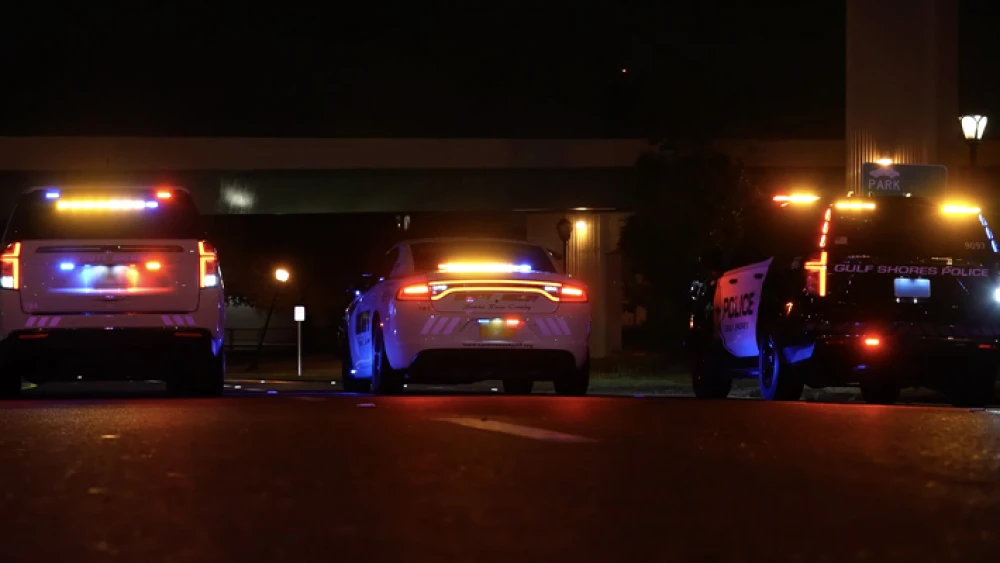The side of a road is one of the most dangerous places a first responder can be. Whether responding to a crash, conducting a traffic stop, or managing a roadside emergency, first responders face the constant threat of oncoming traffic. Even with sirens and warning lights, distracted drivers can make split-second decisions that put lives at risk.
Despite public awareness campaigns and Move Over laws in all 50 states, struck-by incidents remain a serious problem. The National Safety Council reported a troubling rise in fatal crashes involving emergency vehicles in 2022, highlighting the critical need for more effective safety solutions.
At Whelen, our mission has always centered around the safety of those who serve on the front lines, ensuring they get home safely at the end of each shift. We’ve developed technologies that represent the continued evolution of that mission, advancing safety through smarter, more connected warning systems designed to protect those who protect us.
The Challenge of Traditional Flash Patterns
Typical emergency lighting often relies on high-speed flashes and abrupt transitions. While effective for grabbing attention, it can also:
- Distract rather than direct
- Increase cognitive load on drivers
- Create unsafe glare or flash-induced disorientation
- Cause “flash clutter” in scenes with multiple vehicles
- Trigger the “moth-to-flame” effect, where flashing lights unintentionally draw drivers toward the scene, increasing the risk of injury for first responders and drivers alike
For today’s first responders, smarter lighting - not just brighter lighting - is the key to safer outcomes.
Enter DVI®: A Calmer, Smarter Way to Signal Danger
Our Dynamic Variable Intensity® (DVI) technology was developed to enhance safety on the road and help drivers respond more appropriately in high-stress environments. Unlike traditional warning lights that rely on sudden, intense flashes, DVI uses gradual lighting transitions and carefully timed pulses to improve comprehension and focus attention.
As Matt Kehoe, Director of Fire, EMS, and Amber Sales at Whelen Engineering, explains, “Whelen DVI, being first to market, led the pack by removing flash edges, offering a smoother, calmer pattern to focus on situational safety at night. It’s not just another pattern but the pattern our customers choose for increased safety at night.”
The calming effect of DVI technology is a game-changer for first responders. Instead of flashing lights that might cause drivers to look away or become disoriented, DVI delivers clearer, more deliberate visual cues, helping motorists make quicker, safer decisions.
What Makes DVI Different?
The advantages of DVI extend far beyond its smooth transition patterns. Key features include:
- Smoother lighting sequences that reduce sensory overload
- Elimination of sharp flash edges that cause flash clutter
- Improved driver response time with more readable signals
- Enhanced nighttime visibility without increasing glare
This deliberate shift in light design doesn’t just protect first responders, it creates a safer environment for everyone on the road.
What is V2V Sync?
Vehicle-to-Vehicle (V2V) Sync is a technology that allows emergency vehicles to communicate wirelessly with each other, ensuring that their warning lights sync up seamlessly. This technology transforms scattered, individual flashes into coordinated visual patterns, making it easier for drivers to understand and respond to a scene.
V2V Sync works by synchronizing the warning lights of all vehicles involved in an emergency response. By creating a unified light display, V2V helps eliminate confusion for drivers and reduces the visual noise often found at complex crash scenes.
The Benefits of V2V Sync at Multi-Vehicle Scenes
At multi-vehicle emergency scenes, clarity and coordination between responding vehicles are essential. V2V synchronization allows vehicles to sync their warning lights, transforming individual flashes into a unified visual pattern. This coordination helps drivers easily interpret the scene and respond more effectively, minimizing confusion and improving safety for everyone involved.
- Unified light patterns for better driver comprehension
- Stronger visual presence across the entire scene
- Less confusion and visual noise for approaching traffic
- Safer environments for responders and motorists alike
- The ability for neighboring departments to synchronize lighting patterns, creating a cohesive and coordinated warning system across agencies
By syncing the warning systems of all vehicles on the scene, V2V creates a clear and cohesive message, ensuring better response times and safer outcomes.
How DVI and V2V Work Together
When paired together, V2V Sync and DVI technology enhances the effectiveness of emergency lighting by creating a coordinated, more intuitive visual experience.
As Eric Maurice, Director of Law Enforcement Sales for Whelen Engineering, explains, “Whelen never compromises the integrity of our warning lights. With DVI, we smooth out our flash patterns, and when paired with V2V sync, it’s proven to be visually impactful in keeping all parties safe.”
This combination makes the most of both technologies: DVI’s calming, deliberate light transitions and V2V’s coordination across multiple vehicles. Together, they provide a clearer, safer response, especially in complex scenes with multiple vehicles, helping drivers react more swiftly and accurately while safeguarding first responders.
Lighting the Way to Safer Responses
Smarter lighting saves lives. At Whelen, we’re pushing the boundaries of what’s possible in emergency vehicle lighting. With DVI and V2V, we’re setting a new benchmark for safety by providing clear, actionable signals that help drivers respond quickly and accurately. This isn’t just about innovation - it’s about leading the way to safer roads where every second counts and every decision has the potential to save a life.

